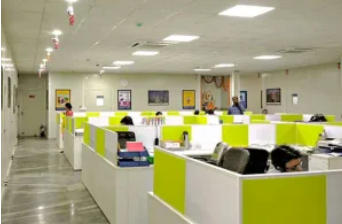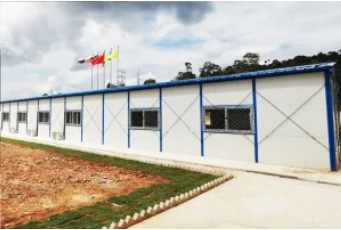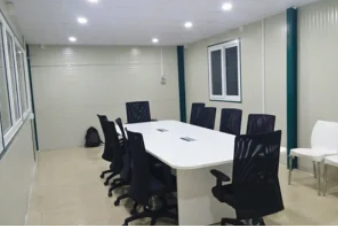What is a prefab office?
The Prefab Office: A Comprehensive Guide to the Future of Workspace
The traditional image of office construction—a lengthy, disruptive process involving countless workers, pouring concrete, and erecting steel beams—is being fundamentally challenged. In its place, a faster, smarter, and more efficient model is rising: the prefab office. Also known as modular or off-site construction, this approach is revolutionizing how businesses conceptualize, acquire, and utilize their workspace.
This article provides a deep dive into the world of prefab offices, exploring what they are, how they are built, their key benefits and potential challenges, the various types available, and why they represent a significant shift in commercial real estate.
1. What is a Prefab Office? A Core Definition
At its simplest, a prefab (prefabricated) office is a structure that is manufactured in sections, or “modules,” within a controlled factory environment before being transported to its final site for assembly. Think of it like building with sophisticated, volumetric Lego bricks.
This methodology stands in stark contrast to traditional “stick-built” construction, where every component is assembled piece-by-piece on the building site, exposed to the elements and potential delays. Prefab construction transfers the majority of the building process indoors, applying factory-level precision, efficiency, and quality control to the creation of commercial spaces.

It’s crucial to understand that “prefab” is an umbrella term that encompasses several different systems:
- Volumetric Modular: This is the most complete form of prefab. Entire rooms or sections of the office—complete with walls, ceilings, flooring, electrical wiring, plumbing, and even finishes—are constructed as three-dimensional boxes in the factory. These modules are then transported to the site and stacked or arranged to form the complete building.
- Panelized (or Non-Volumetric): In this system, flat pre-engineered panels (e.g., walls, floors, roof sections) are manufactured off-site. These panels are then shipped to the site and assembled into the building’s structure. This method offers great design flexibility while still capturing many off-site efficiencies.
- Hybrid Modular: Many prefab offices use a combination of both volumetric modules for complex areas like bathrooms or kitchenettes and panelized systems for larger open-plan spaces.
2. The Prefab Process: From Factory to Foundation
The journey of a prefab office from concept to completion is a study in streamlined project management.

- Design and Engineering: The process begins with collaborative design, often using Building Information Modeling (BIM). This digital model ensures that every component is precisely designed to fit together seamlessly. The design phase is critical as it locks in decisions early to avoid costly changes later.
- Factory Fabrication: While site preparation (grading, laying the foundation) is underway, the office modules are being built simultaneously in a factory. In this controlled environment, workers can install insulation, run electrical conduit, hang drywall, and lay flooring with robotic precision, unaffected by rain, wind, or extreme temperatures.
- Transportation: Once completed, the modules are carefully transported to the construction site on flatbed trucks. Logistics planning is essential to navigate routes and ensure the safe delivery of these large components.
- On-Site Assembly: This is the “reveal” phase. Using cranes, the modules are lifted and set onto the prepared foundation. They are then connected to one another—a process involving bolting the structures, sealing the joints, and integrating the mechanical, electrical, and plumbing (MEP) systems.
- Site Completion and Commissioning: The final connections to municipal utilities (water, sewer, power) are made, exterior site work is finished, and a final quality check ensures everything is operational and meets all codes before handover to the client.
This parallel process—site work and building fabrication happening concurrently—is the primary driver behind the dramatically reduced timelines.

3. Key Advantages of Choosing a Prefab Office
The benefits of prefab construction extend far beyond just speed.
- Unparalleled Speed of Delivery: This is the most cited advantage. Because site preparation and building fabrication occur simultaneously, project timelines can be reduced by 30% to 50% compared to traditional methods. A company can go from an empty lot to a fully functional office in a matter of months, or even weeks for smaller units, allowing for faster business expansion or return-to-operation.
- Significant Cost Certainty and Potential Savings: The factory environment allows for bulk purchasing of materials and minimizes waste through precise cutting and recycling. More importantly, it drastically reduces the risk of weather delays and on-site labor uncertainties, which are major sources of cost overruns in traditional construction. This leads to greater budget predictability.
- Superior and Consistent Quality: Factory-controlled production means building in a clean, dry environment with specialized tools and jigs. The materials are protected from the weather, preventing moisture damage and mold growth before the building is even occupied. The result is a consistently high-quality product with tighter tolerances and fewer defects.
- Enhanced Sustainability: Prefab construction is inherently greener. The precision of factory manufacturing leads to a significant reduction in material waste—often by up to 90%. Off-cuts can be recycled within the factory, and many prefab providers prioritize the use of sustainable and energy-efficient materials. The completed buildings are also often highly insulated, leading to lower energy consumption for heating and cooling over their lifespan.
- Minimal On-Site Disruption: For businesses adding an office to an existing operational site (e.g., a factory, school, or hospital), prefab is a game-changer. The noisy, messy, and disruptive construction phase is shortened and simplified, with the site primarily seeing delivery and crane assembly rather than months of intensive labor.
- Future Flexibility and Scalability: Many prefab offices are designed with future growth in mind. As a company expands, additional modules can be manufactured and added to the existing structure, facilitating a scalable and flexible growth strategy. Similarly, if a company relocates, some modular buildings can be disassembled and moved.
4. Potential Challenges and Considerations
While the advantages are compelling, a balanced view requires acknowledging the potential challenges.

- Perceived High Initial Cost: While often cheaper in the long run, the upfront price of a high-quality prefab office can sometimes be higher than a basic traditional build, as it encompasses the entire integrated system and factory overhead.
- Limited Design Flexibility for Standard Models: While custom designs are absolutely possible, highly unique or complex architectural statements may be more challenging and expensive to execute in a modular system compared to traditional bespoke construction. However, the design capabilities of prefab companies are rapidly expanding.
- Transportation Logistics and Constraints: The size and weight of modules are limited by road regulations. This can influence the maximum dimensions of a module and requires careful logistical planning for sites in remote or difficult-to-access locations.
- Financing and Zoning Hurdles: Some lenders and local authorities may still be less familiar with prefab construction, potentially creating hurdles in securing financing or obtaining building permits. It’s crucial to work with providers who have experience navigating these processes.
5. Common Types and Applications of Prefab Offices
The versatility of prefab construction allows it to serve a wide range of needs:
- Single-Story Office Buildings: Ideal for corporate campuses, business parks, and retail back-offices. They can range from a single module for a site manager’s office to large, multi-module complexes for entire departments.
- Multi-Story Corporate Headquarters: Modern volumetric modular techniques allow for the creation of impressive, multi-story buildings that are indistinguishable from their traditional counterparts.
- Modular Office Pods and Interiors: This application focuses on the interior fit-out. Prefabricated wall panels, ceiling systems, and even pre-wired power and data modules can be quickly assembled inside a traditional shell building to create a finished office space in record time.
- Relocatable and Temporary Offices: For construction sites, disaster relief, or short-term project teams, prefab site offices provide an instant, fully-equipped workspace that can be easily moved when no longer needed.
- Hybrid Work Hubs: As companies adopt hybrid models, prefab offices can be strategically placed in suburban locations, offering employees a professional workspace closer to home without the commute.
6. The Prefab Office in a Post-Pandemic World
The COVID-19 pandemic accelerated trends that align perfectly with the strengths of prefab construction. The need for:
- Faster occupancy to adapt to changing business needs.
- Cost control in an uncertain economic climate.
- Healthier buildings with improved ventilation and quality materials.
- Decentralized workspaces outside of dense urban cores.
All these needs are met effectively and efficiently by the prefab office model.
Conclusion: More Than a Building, A Strategic Business Decision
The prefab office is no longer just a cheap or temporary alternative. It has matured into a sophisticated, high-performance, and sustainable method of construction that challenges the inefficiencies of the past. By offering unparalleled speed, cost certainty, quality, and flexibility, it represents a strategic tool for businesses looking to adapt and thrive in a fast-paced world.
As technology continues to advance—with greater integration of BIM, robotics, and smart building systems—the capabilities and appeal of prefab offices will only grow. For any business leader or organization considering a new workspace, the question is no longer “Why prefab?” but rather, “Why would we build any other way?”

